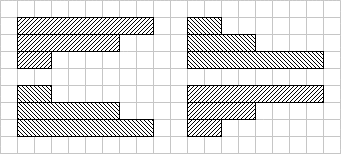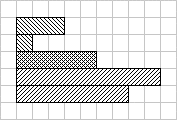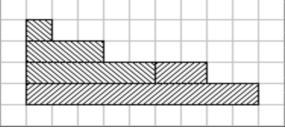|
Regular and Repeating Groups

Groups are constituted by
consecutive variations.
The size of the group is the number of variations in
it
(except for flats - groups of equal gaps).
All regular groups
have symmetry, axial or polar.
|
Symmetrical groups having any variations: |
|
symmetriads
having a horisontal axis of symmetry, |
|
curls
having polar symmetry;
|
|
Special groups |
|
stairs
|
having equal variations
(a
special kind of curls); |
|
zigzags |
having the same absolute values and alternating
signs of consecutive variations
(a special kind of even symmetriades or odd curls); |
| |
and
flats
having only variations equal zero,
and which size of is the
number of consecutive constant gaps in it
(a special kind of all previous kinds of regular groups). |
Repeating groups constitute
clusters
of 3 kinds: levels, pairs, and
foursomes.
Flats having
the same gaps
constitute
levels.
Uniform symmetriads , curls, stairs , and zigzags,
having vertical symmetry each to other, constitute
pairs.
Uniform repeating irregular groups
having both vertical and horizontal symmetry each to other
do
foursomes.

REGULAR GROUPS
in the range until 1,000,000,000
|
FLATS
V = 0
have 2, 3, 4, and 5 gaps
The consecutive equal
gaps are repeating elements,
and the size is the number of consecutive gaps
Maximal size = 5
Gn
Î
G0 |

|
|
STAIRS
Vi = Vi+1
have 2, 3, 4, 5, 6, 7, 8, and 9 variations
Maximal size = 9
|

|
|
ZIGZAGS
Vi = - Vi+1
have
3, 4, 5,
and
6 variations
Maximal size = 6 |

|

|
|
|
Oddsymmetriads
Vc = 0
Vc - i
=
-
Vc + i
have 3, 5, and 7 variations
Maximal size = 7
Gc
Ì
G0GcGn
Î
G0
GVn
Î
V 0G0Gc
Ì
G0
|

|


FOURSOMES
Irregular
repeating groups constituting a foursome have the same set of
variations
and are of four kinds:
groups
having the sequence of variations downward:
- positive groups (main kind);
- negative groups having the same variations with the reversed
sign;
antigroups
having the reversed order of the sequence of variations (upward):
- positive antigroups having the same variations with the
reversed sign;
- negative antigroups having the same variations with the
same sign.
|
Negative group
|
Positive group
|
|

|
Negative antigroup
|
Positive antigroup |
|







